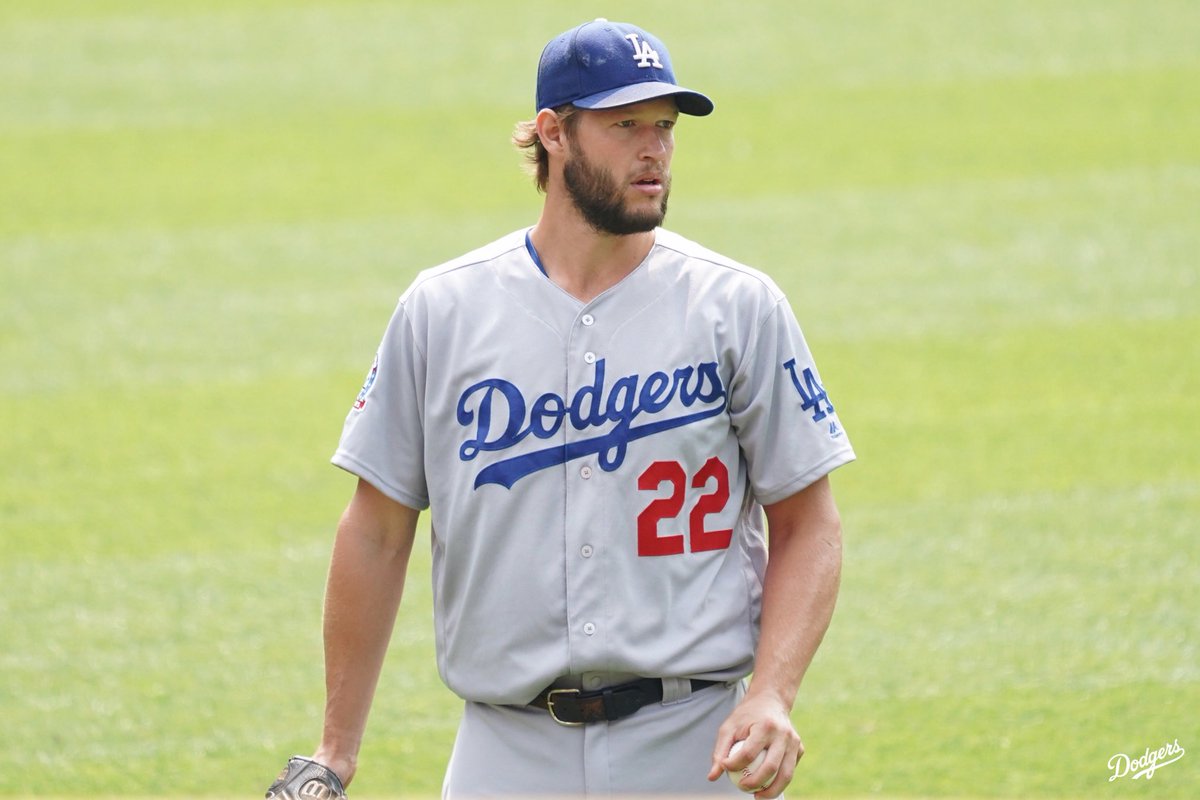
There’s no sugarcoating it: Clayton Kershaw was bad in Game 1 of the National League Championship Series. His 3-inning, 5-run outing fired up the postseason narrative once again, despite throwing eight shutout innings a week earlier against Atlanta.
Fast forward to yesterday — five days after his last start — and he looked more like vintage Kershaw, save the velocity.
What was the difference? Kershaw found his whiffs.
In Game 1, Kershaw induced five swinging strikes — three on his fastball, two on his curveball … and zero on his slider. It was the first regular- or postseason game since Aug. 3, 2009 (coincidentally, against the Brewers) that he didn’t induce a swinging strike on his slider. He started throwing in in June 2009.
Not only did he get swinging strikes, he got 10 of them — tied for the 2nd-most whiffs on his slider this season. His eight whiffs on the curveball was easily a season high and the highest number since June 2, 2017 against — you guessed it — the Brewers.
Eno Sarris, now of The Athletic, wrote a piece at FanGraphs in May of last year that proposed pitchers start throwing more and more breaking pitches.
“What if they didn’t, though? We’re talking about a potentially healthier approach for a pitcher — fewer high-velocity fastballs — and also pushing the expected number of fastballs per average plate appearance under one. Can batters use the same approach if they might only see one fastball a night? Or two? The evidence is that velocity differential is not as important for whiffs on breaking balls — it’s not quite like a changeup in that regard, the breaking ball may not need the fastball as much as a changeup does. What if a pitcher started throwing 80% breaking balls?”
He goes onto say the drawback could be more walks, but with a fastball that’s not what it once was, perhaps a more breaking-ball heavy repertoire for Kershaw might be in order. I’m not sure he ever gets to a 20/80 split in terms of fastballs/breaking balls — the low among qualified starters was Zack Godley‘s 32.2 percent fastball usage — but we could see the continuing decline of Kershaw’s fastball usage.
I wrote about his slider/fastball issue in late August.
“Depending what source you trust most/like, Kershaw is averaging between 90.9 (Baseball Savant/FanGraphs) and 91.5 MPH (Brooks Baseball). That’s … not great. It coupled with the near blending of his fastball and slider, has led to him going from elite to simply really good this season. As a result, he is throwing his fastball less this season (41.4 percent). That plays into the pitch value being down, but if he were throwing at his pre-2018 velocity, I’m sure that number would be a bit higher. But despite that, his fastball usage has been trending downward, well, nearly his entire career. Among starters with 110 innings pitched, Kershaw’s 41.4 percent mark is 12th-lowest in baseball. Conversely, his 41.0 percent slider usage is 5th-highest in baseball.”
He ended up with 40.8 percent fastball usage (6th-lowest among pitchers with 161 innings pitched) and 42.3 percent slider usage (2nd-highest behind Jhoulys Chacin). Kershaw’s 2018 saw him with roughly a 41/59 split (fastball/breaking ball), and I’m not sure how much wider that split could be for Kershaw. But if he isn’t going to get whiffs on his fastball, perhaps going this direction could work. Of course, Kershaw has to execute the pitches. Making the slider a little sharper could help differentiate it from the fastball if he isn’t going to throw it any slower, but that’s work for the offseason.
In his biggest start of the season, we saw why Kershaw is still really good. He made the adjustments necessary from Game 1 and induced season-high 19 whiffs. Here’s hoping for more of that for the rest of the postseason … should he get the chance to pitch again.
 Dodgers Digest Los Angeles Dodgers Baseball Blog
Dodgers Digest Los Angeles Dodgers Baseball Blog